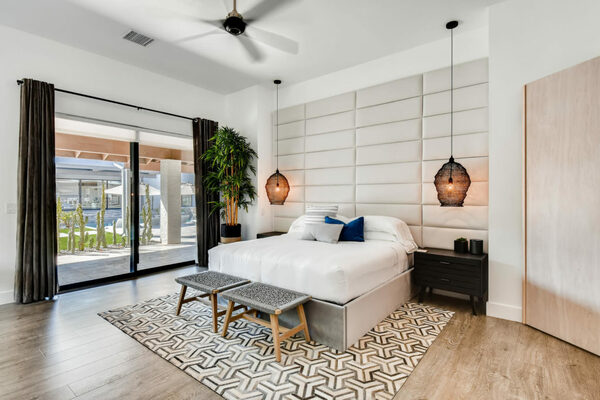ALL BUSINESS
COMIDA
DIRECTORIES
ENTERTAINMENT
FINER THINGS
FREE CREATOR TOOLS
HEALTH
MARKETPLACE
MEMBER's ONLY
MONEY MATTER$
MOTIVATIONAL
NEWS & WEATHER
TECHNOLOGIA
TV NETWORKS
VIDEOS
VOTE USA 2026/2028
INVESTOR RELATIONS
ALL BUSINESS
COMIDA
DIRECTORIES
ENTERTAINMENT
FINER THINGS
FREE CREATOR TOOLS
HEALTH
MARKETPLACE
MEMBER's ONLY
MONEY MATTER$
MOTIVATIONAL
NEWS & WEATHER
TECHNOLOGIA
TV NETWORKS
VIDEOS
VOTE USA 2026/2028
INVESTOR RELATIONS
Posted by - Shawn Walter -
on - Jan 6 -
Filed in - Other -
Inland Empire Real estate photography -
56 Views - 0 Comments - 0 Likes - 0 Reviews

Natural light is one of the most powerful tools in a real estate photographer's arsenal. The Inland Empire, with its sunny climate and diverse architectural styles, offers ample opportunities to harness natural light for stunning property photographs. Mastering the art of using natural light can elevate your Inland Empire photography, making properties stand out in a competitive market. This guide delves into techniques, tips, and best practices to enhance real estate photos using natural light.
Natural light creates a warm, inviting atmosphere that artificial lighting often fails to replicate. It highlights textures, enhances colors, and gives photos a realistic and appealing look. For Inland Empire photography, leveraging the region's abundant sunlight can make properties appear brighter, more spacious, and more attractive to potential buyers.
The position of the sun dramatically affects how light interacts with a property. Use tools like smartphone apps or online calculators to track the sun's position throughout the day. Understanding when sunlight hits the property at the right angle ensures optimal lighting for your photos.
The golden hours—shortly after sunrise and just before sunset—offer soft, warm light that minimizes harsh shadows and adds a magical glow to images. This timing is particularly effective for outdoor shots and capturing the ambiance of a property’s surroundings.
Midday sunlight is often harsh, creating stark contrasts and unflattering shadows. If shooting during this time is unavoidable, use reflectors or diffusers to balance the light and soften shadows.
A clean and clutter-free space allows light to flow freely, enhancing the room’s brightness and appeal. Ensure windows are spotless to let in maximum light without distractions.
Maximize natural light by opening all curtains and blinds. For sheer curtains, consider leaving them closed to diffuse harsh light while maintaining brightness.
Arrange furniture and decorative elements to avoid blocking light sources. Position reflective surfaces like mirrors to bounce light around the room, creating a more luminous effect.
Windows are your primary source of natural light indoors. Position yourself to shoot with the light coming from the side for a balanced exposure that highlights depth and dimension.
Rooms with multiple windows may have uneven lighting. Use light reflectors or whiteboards to fill in darker areas, ensuring even illumination throughout the space.
Soft shadows add depth, but harsh shadows can be distracting. Adjust your angle or use translucent materials to diffuse the light and soften shadows.
• Front Lighting: Ideal for creating bright, evenly lit images. • Side Lighting: Adds depth and texture, making the room feel three-dimensional. • Backlighting: Creates dramatic effects but requires careful exposure adjustments to avoid blown-out highlights.
Capture the property’s exterior when the sun is behind you, illuminating the facade evenly. Early morning or late afternoon light works best for this purpose.
Pools, gardens, and patios are key selling points in Inland Empire properties. Use natural light to emphasize these areas, ensuring the sunlight enhances the textures and colors without overpowering the scene.
Showcase the property’s location by including views of the surrounding area. Whether it’s mountain vistas or urban landscapes, natural light can highlight the beauty of the Inland Empire’s environment.
RAW files retain maximum detail and provide greater flexibility in post-processing, allowing you to adjust exposure and white balance without compromising image quality.
Natural light can vary in color temperature throughout the day. Use your camera’s white balance settings to ensure accurate colors, or fine-tune this in post-production.
Keep your ISO setting low to minimize noise and maintain image clarity. In well-lit conditions, an ISO of 100 or 200 is ideal.
Choose a shutter speed that avoids motion blur while maintaining proper exposure. Use a moderate aperture (f/8 to f/11) for sharpness and depth of field, ensuring all elements in the frame are in focus.
Fine-tune exposure levels to brighten shadows and enhance contrast, ensuring the photo looks vibrant without appearing over-edited.
Adjust white balance to achieve natural and accurate colors. This step is crucial when dealing with mixed lighting conditions.
Enhance textures like wood grain, stone, and fabric to showcase the property’s materials. Use clarity and sharpness tools sparingly to avoid an unnatural look.
While lens flares can sometimes add artistic flair, they can also distract from the property’s features. Use editing software to eliminate unwanted flares for a cleaner look.
Bright sunlight can cause blown-out highlights. Use exposure bracketing to capture multiple shots at different exposures and merge them in post-processing for a balanced result.
Reflections from windows or shiny surfaces can be distracting. Change your shooting angle or use a polarizing filter to minimize glare.
Rooms with varying light levels can be challenging to photograph. Use HDR techniques to combine multiple exposures, ensuring consistent brightness throughout the image.
For a downtown Riverside loft, morning light streaming through large windows created a bright and inviting atmosphere. Side lighting emphasized the sleek lines of the furniture and architecture, while strategically placed mirrors enhanced the room’s depth.
A Chino Hills home’s outdoor shots were taken during the golden hour, capturing the warm glow on the facade and lush backyard. Indoors, diffused window light highlighted the cozy living spaces, creating a homely feel.
A sprawling Rancho Cucamonga estate benefited from midday light for its outdoor pool area. Reflectors softened shadows, and wide-angle shots showcased the property’s grandeur against the backdrop of the San Gabriel Mountains.
Harnessing natural light is a skill that can transform Inland Empire photography, showcasing properties in their best light and attracting potential buyers. By planning your shoot around the sun, mastering indoor and outdoor lighting techniques, and refining your photos in post-processing, you can create compelling images that stand out in the competitive real estate market. With practice and attention to detail, natural light will become your greatest ally in real estate photography.


